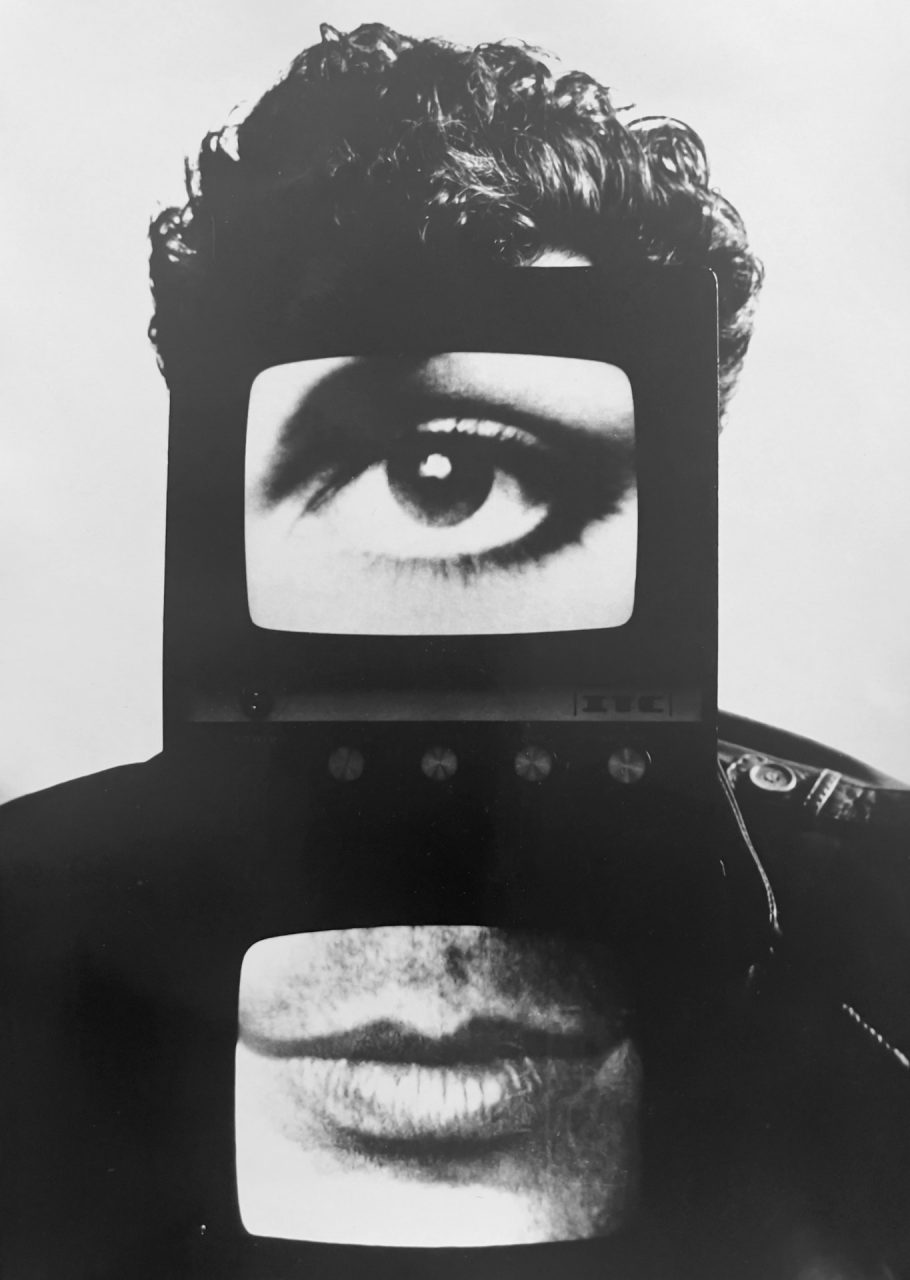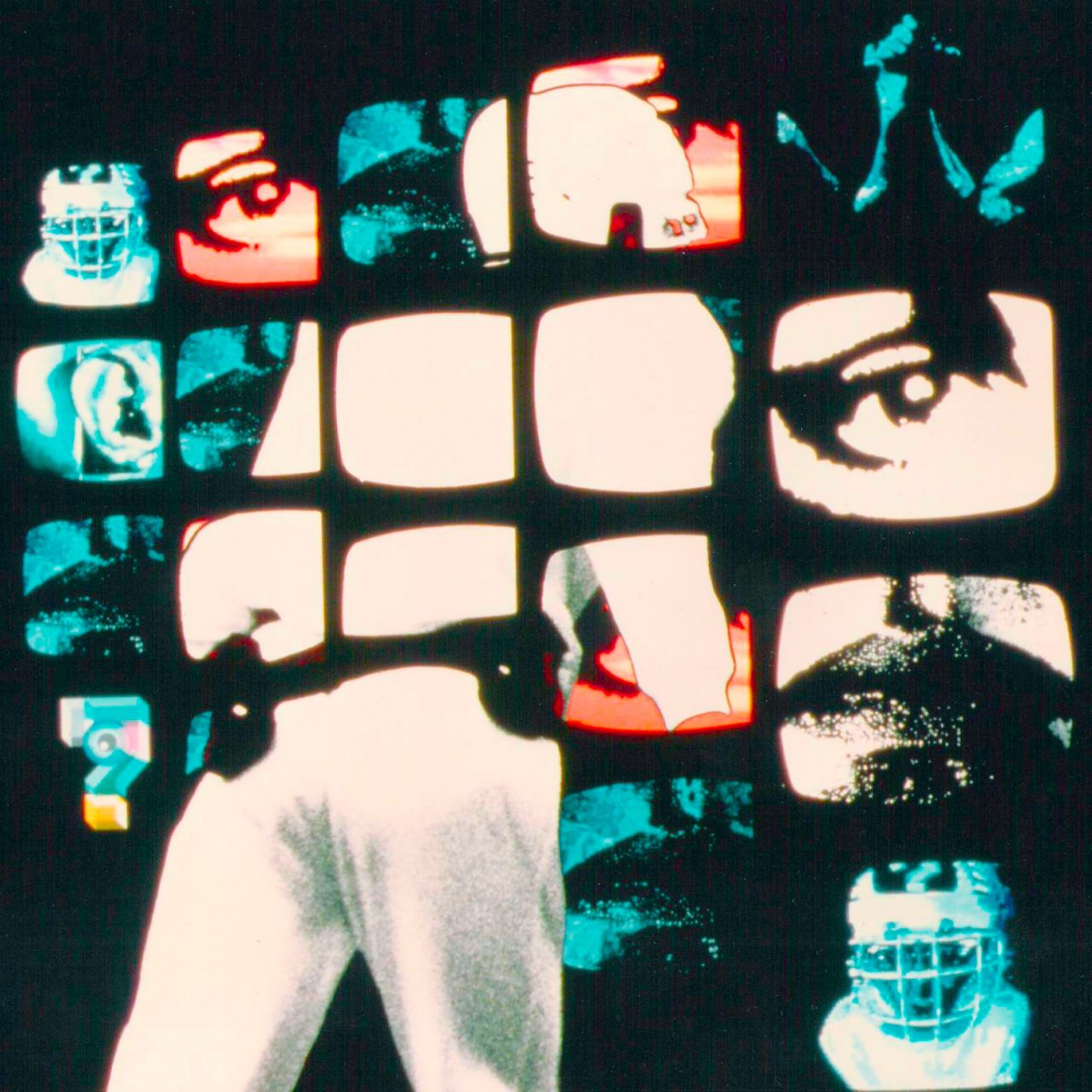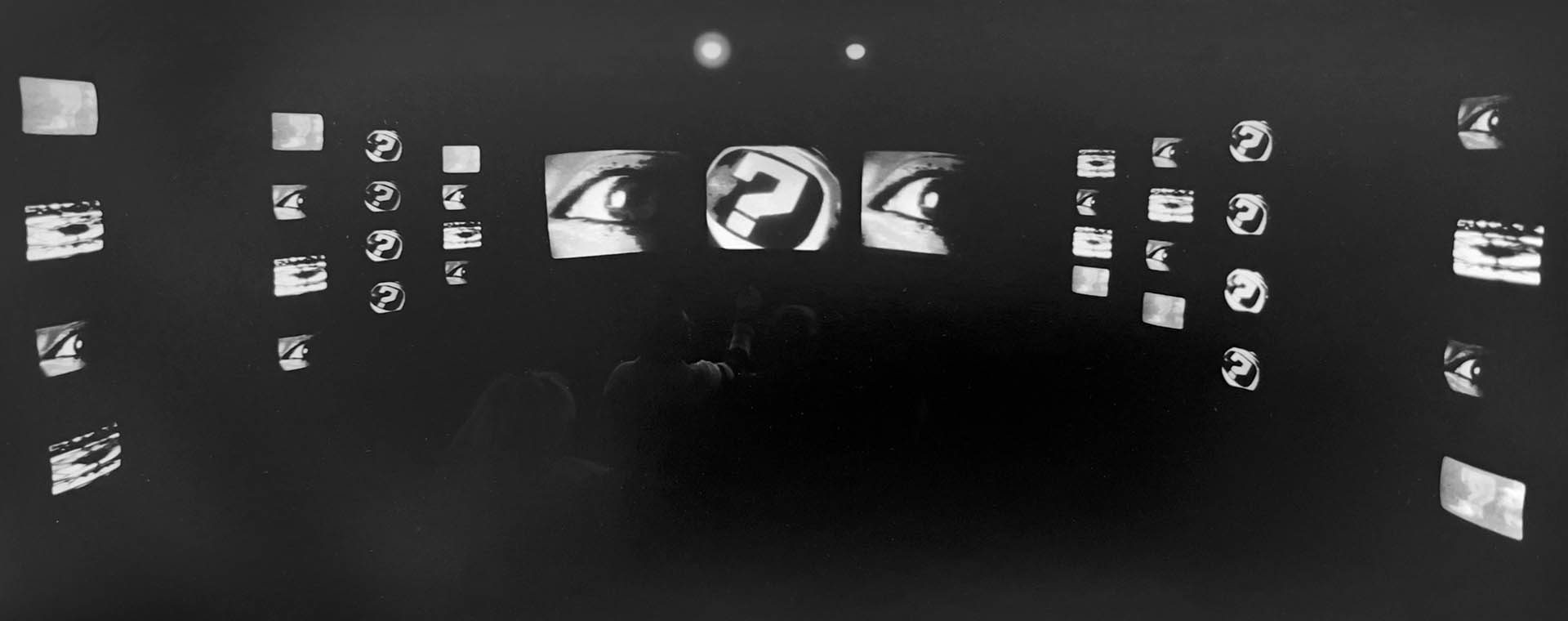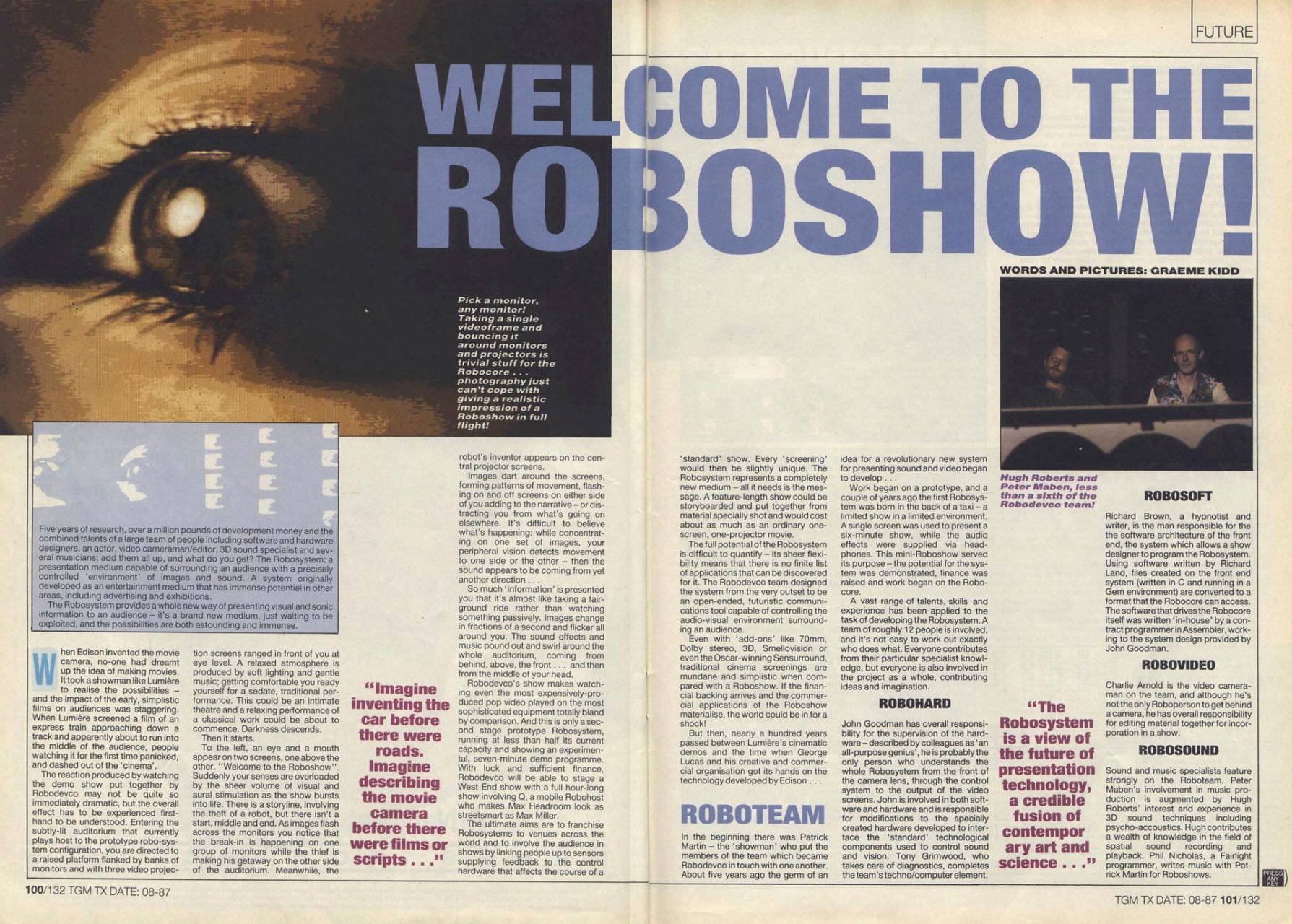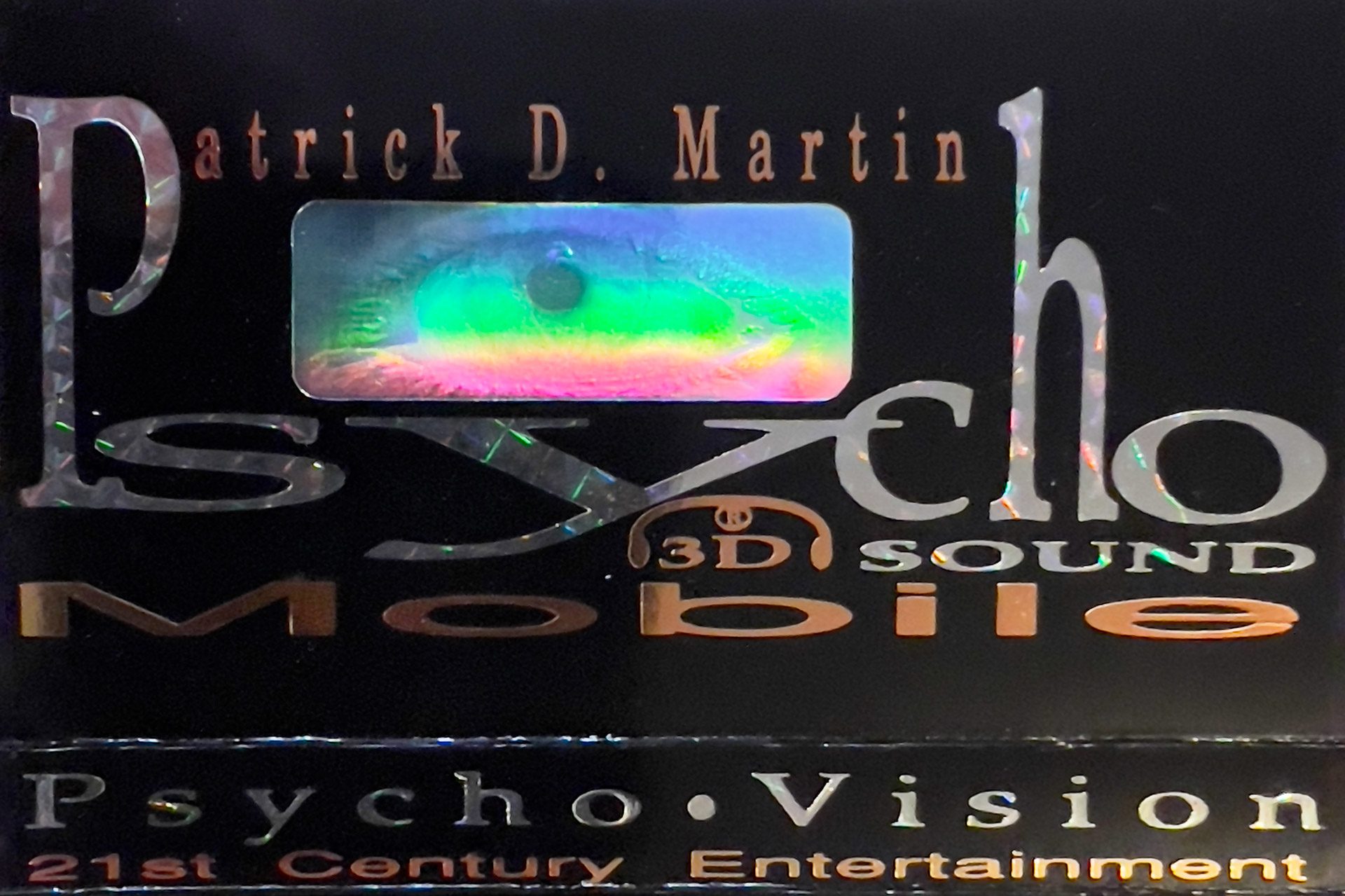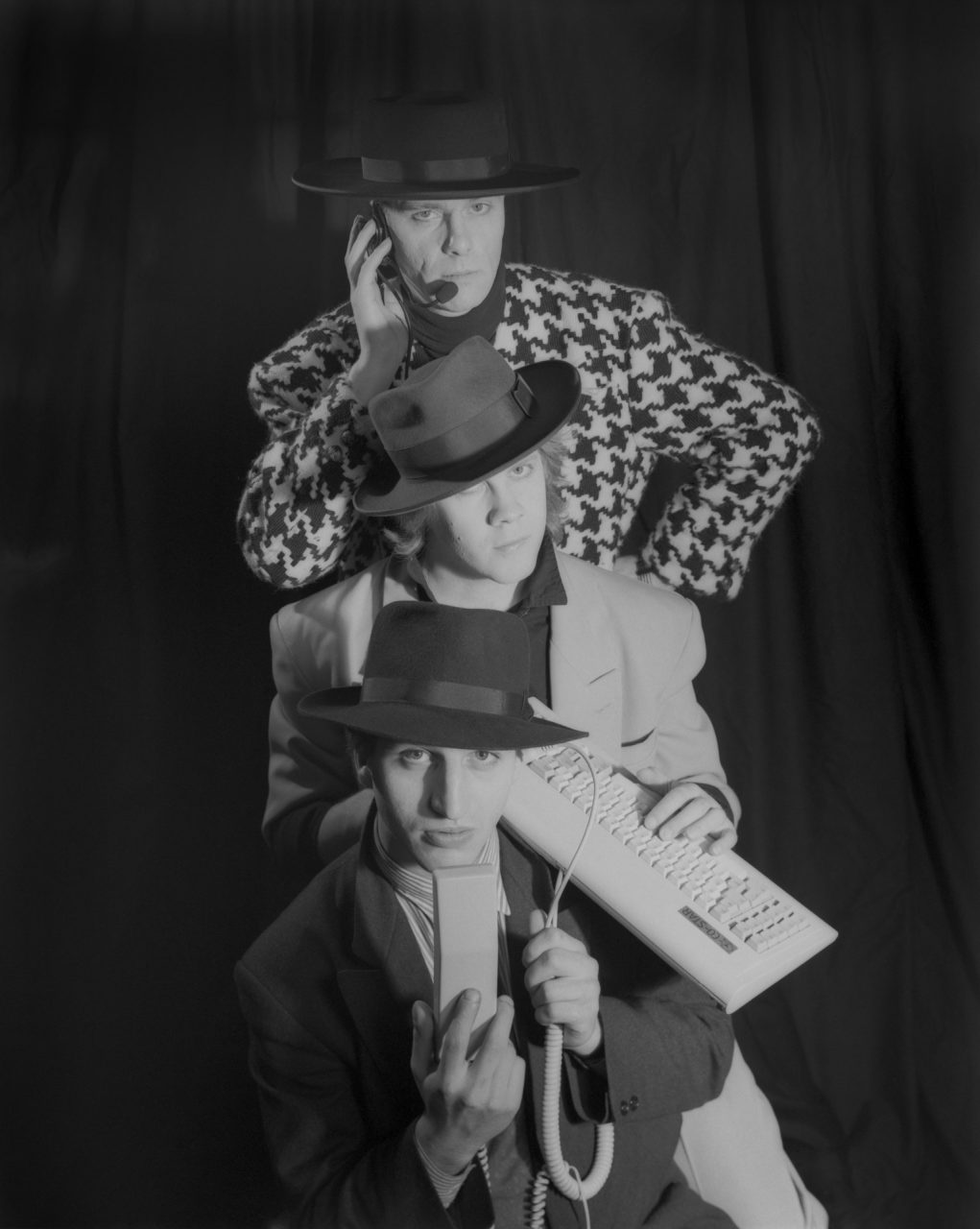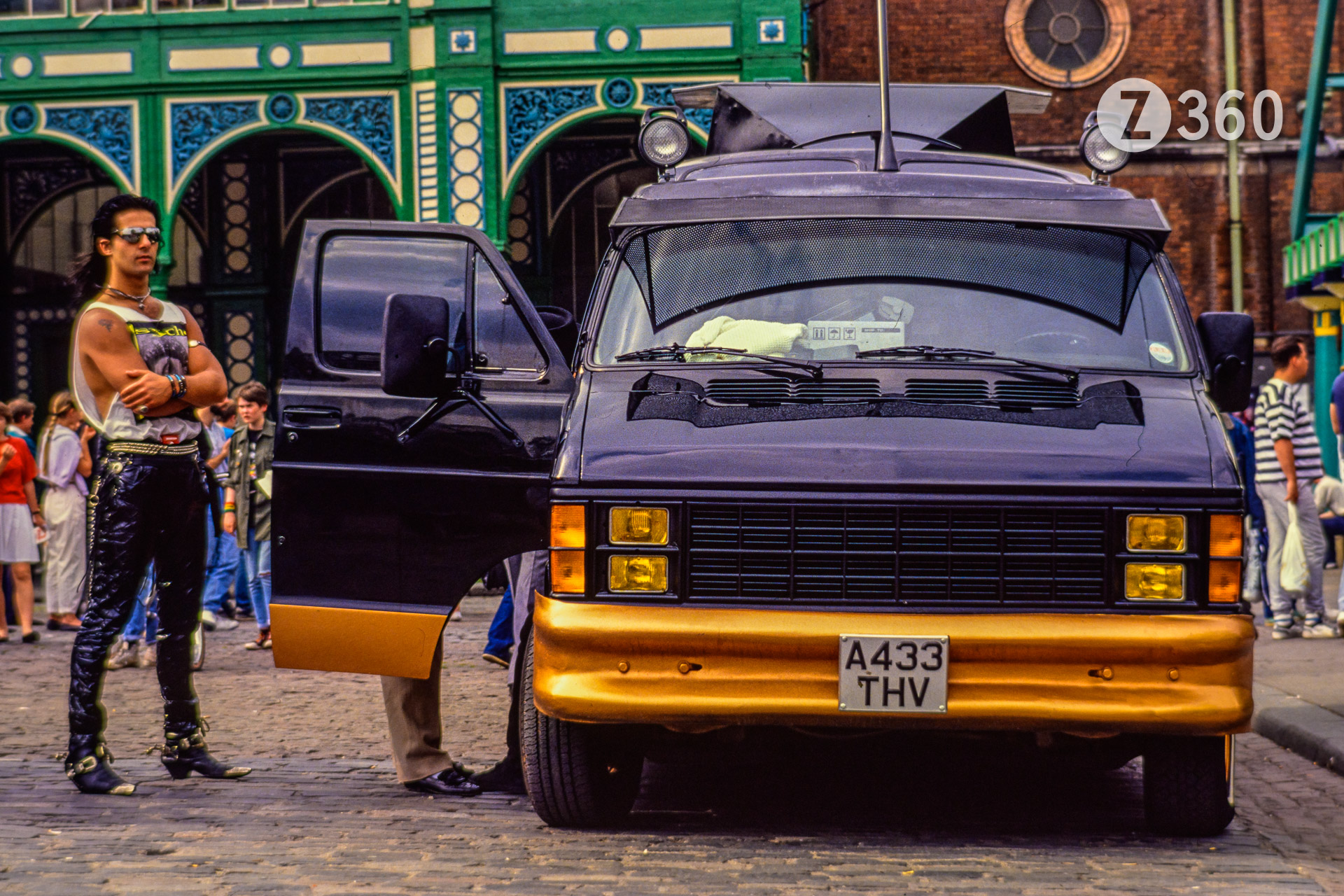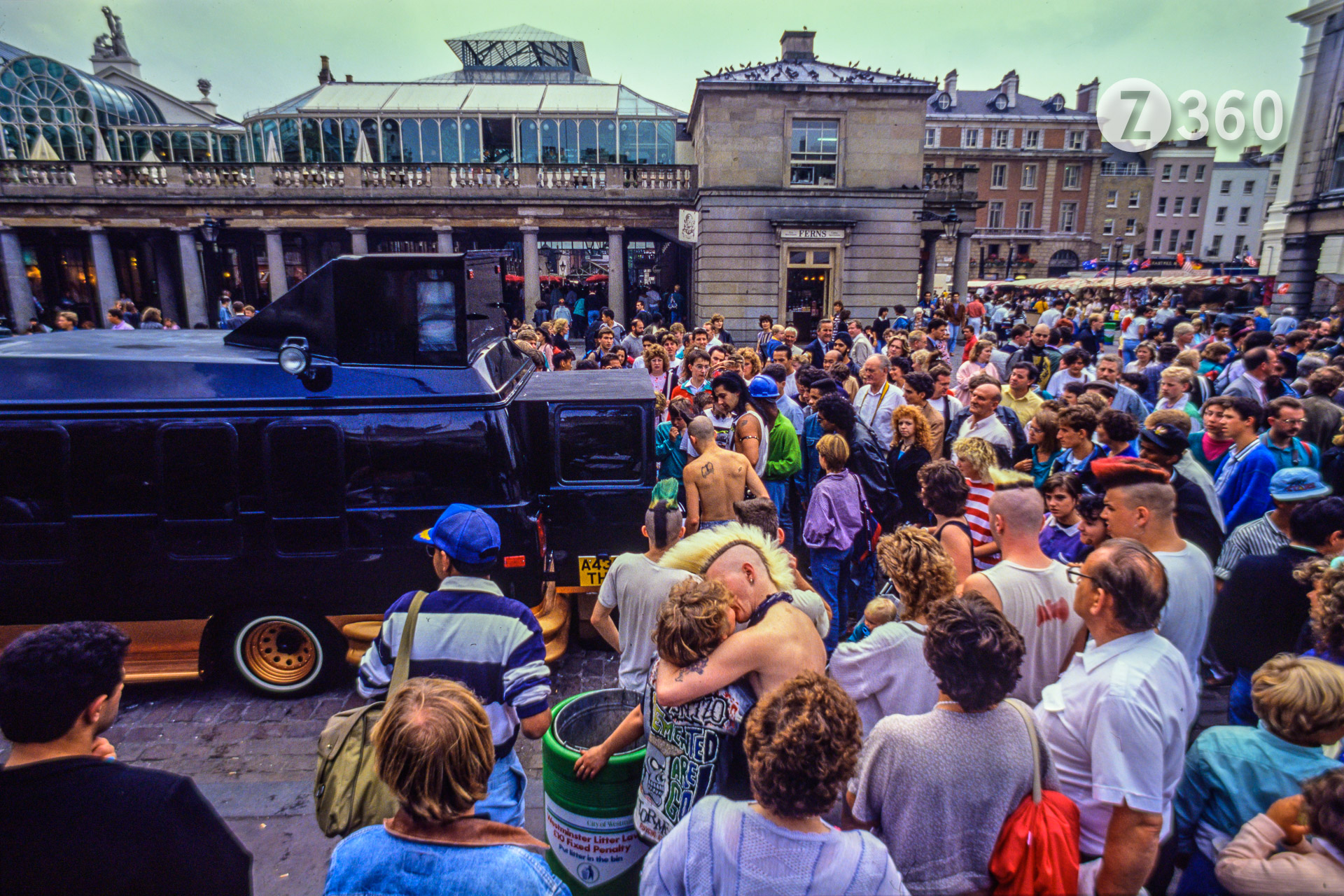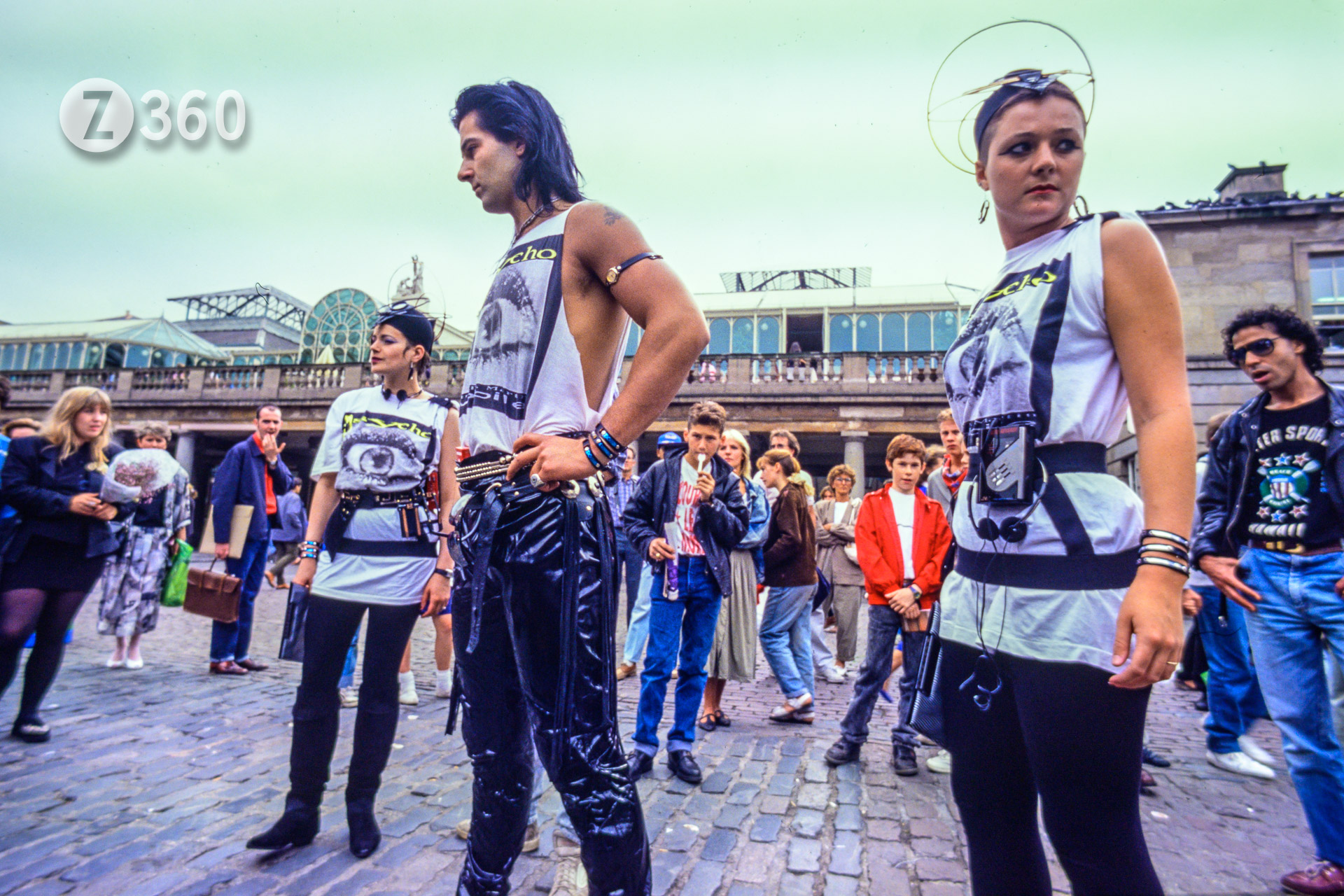In 1982, at the instigation of Patrick D. Martin, I became the photographic co-ordinator for Robodevco. This later became The Roboshow, where a prototype multimedia computer controlled a forty-three screen, three dimensional sound experience. It was hosted by ‘Q’, a virtual robot at a large warehouse off Torriano Avenue in Kentish Town, London, 1985. It proved to be a “a completely new screen sensation”.
Before the Roboshow there was the Technocab, the most enjoyable part of the whole experience. This was a blacked out London taxi cab containing a Trinitron TV and a BBC computer. Due to the size of the huge cathode ray tube monitor it was a one person experience with binaural headphones, like a solo cinema. The cab would start up as if going on a journey, often dry ice was involved, sometimes we rocked the cab to simulate movement. A taste of what you would see (2 mins in) is contained in the following video, the Roboshow Electronic Press Kit. This low-res video features my stills animated with Bob Lawrie of Blink Productions, as well as the triggered micrographics of Richard Brown.
On the strength of this intense experience nearly a million pounds was raised to fund the Roboshow experience, which was intended to be franchised. A prototype multi screen cinema was constructed and the images would fly around the space in a truly fresh and disorienting manner, after being introduced by Q, a TV robot. Out on location Q was sometimes an American football style roller skater with a video boombox, who featured in the video shot by Charlie Arnold.
The Roboshow garnered a lot of good press, being featured in The Observer, The Face and New Scientist. This description of the show was published in the Evening Standard, January 1987:
“We went into a room that seemed smaller than it actually was because the 20 chairs on the raised platform were pointing towards 50 TV screens that ran around the front and side walls. There was one big screen in the middle.
The lights dimmed.
A rollerskater zoomed straight across our line of vision from left to right with an accompanying sound effect that seemed almost three dimensional. The show had begun– and for the next seven minutes images flickered, jumped, danced and propelled themselves across the screens. Sometimes it was the same picture. Sometimes it would break up so you were seeing the same thing from divers angles on different screens.
It is an experience 50 times as intense as watching regular TV because of the interplay between the screens and the meganess of the sound system.”
These are some of the quotes from the Robodevco Press Pack, which demonstrate why Roboshow garnered so much attention:
“Totally wild … any explanation would fail. to do justice to this experience”
Bruce Dessau, City Limits, Aug 21 ’86.
“The next medium to take over where Cinema left off’
Televisual, Nov ’86.
“Q makes Max Headroom look about as wacky as Sooty”
Direction, Oct ’86.
“Superb -look forward to seeing it in Piccadilly Circus”
Juliet Rix (BBC Newsnight).
“The technical possibilities are extremely exciting”
Roma Felstein (Broadcast).
“Very impressive”
Barry Fox (New Scientist).
“The most important development in Entertainment since they got rid of the Proscenium Arch”
Anthony Horowitz.
This is my photograph of the actual prototype Roboshow in Kentish Town. It was intended to expand the show and run it at Paul Raymond’s Revuebar Boulevard Theatre in Walkers Court Soho, London. Unfortunately this never happened.
It is important to remember that all this was happening before the advent of the internet, digital cameras, HD video or flat screen monitors. In fact analogue video was equivalent to 720×576 pixels at best, that is 625 (576 visible) interleaved scan lines in a 4×3 format. At the time Video 8 with it’s small form factor was the most exciting camera development, but most video was filmed on large and heavy U-matic cameras. Nevertheless The Daily Mirror observed that “the revolution starts here… Shock the music industry and change the world of video”. For an in depth explanation of all this technology the article in The Games Machine magazine, dated August 1987, reveals the many participants and innovations involved:
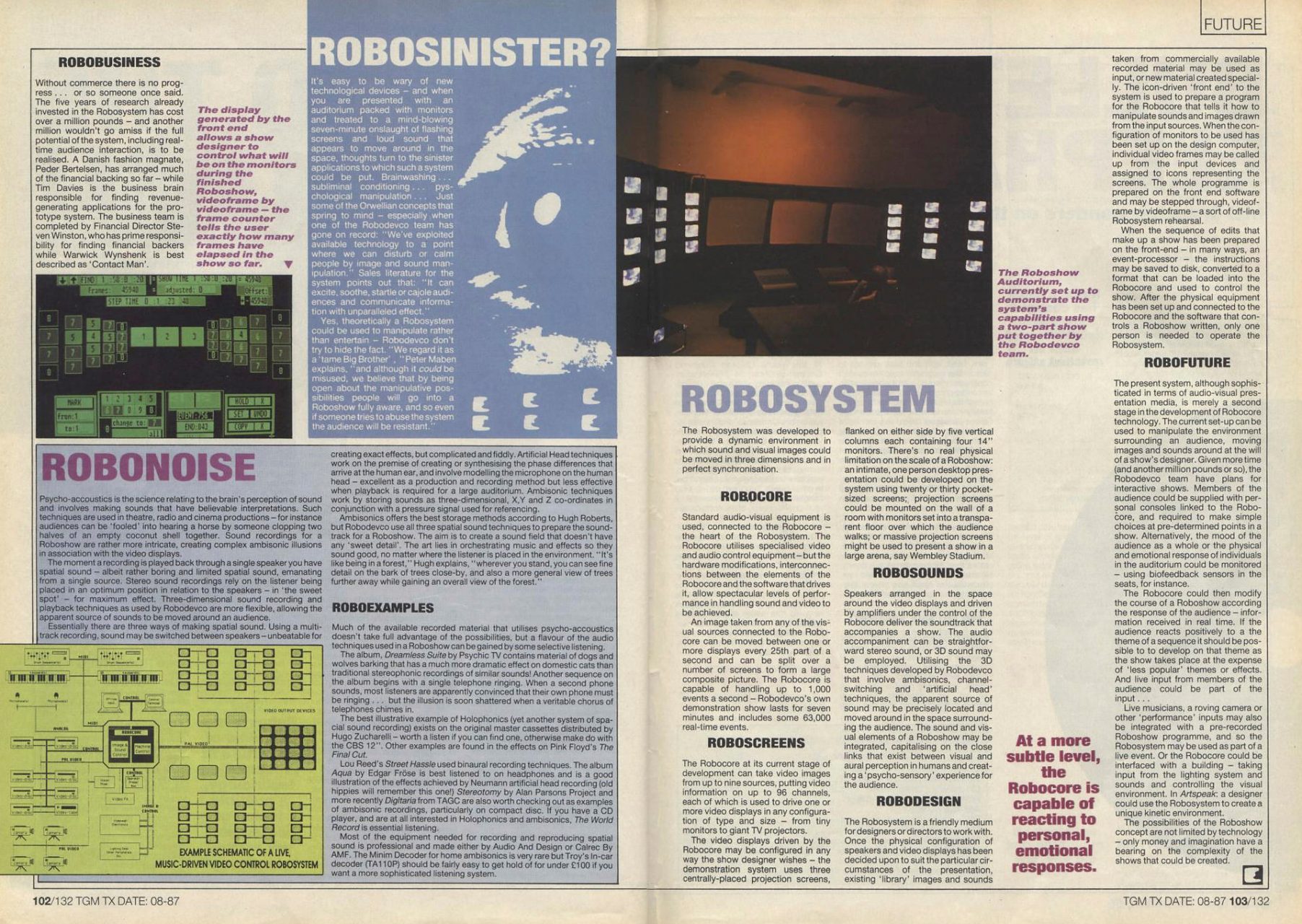
As well as the visuals, audio was an integral part of the experience. A holographic cassette was produced with music by Phil Nicholas, a Fairlight programmer, later to work with The Willesden Dodgers, Stock Aitken Waterman and Def Leppard, among many others.
Here is a promo pic of Patrick Martin, Phil Nicholas and Marcus Kirby taken at Robodevco headquarters:
By 1985 I was fortunately working for New Musical Express and so mostly avoided the machinations involved when new directors and accountants were appointed to Robodevco. The freelance crew (who made the Roboshow) were encouraged to sign contracts to make them rich when the project succeeded, yet were to become liable for large debts as bank guarantors without real equity. Thankfully I did not sign up. Ultimately, after the failure to produce an actual show, this led to arguments about the structure of the project and ultimate dissolution of the company. The directors became XYLO and took the technical assets which opened at a disco called Zhivagos in Darlington in 1988. RIP.
Meanwhile Patrick regrouped and formed Psychovision with a new Technocab, but this time in a Dodge van. I went to the grand unveiling at Chelsea Harbour, but disastrously the new van was not yet finished. Shamefully the many punters were told it had broken down on the Westway. Eventually the Dodge Technocab aka Psychomobile did surface at Covent Garden:
There was some mitigation for the previous disasters when in 1992 Psychovision created a 5 screen show for the Victoria & Albert Sporting Glory Exhibition which was later screened as part of the 1996 Atlanta Olympics. In 2011 Justin Kirby made Roboshow Reboot, a website to document this story, but it has long since disappeared. Here is a brief 44 second clip of my submission for this. It sure all was groundbreaking fun while it lasted…
To conclude here is the full interview Richard Brown made for Roboshow Reboot at the Rewire 2011 conference, which sums up the whole story very well:

